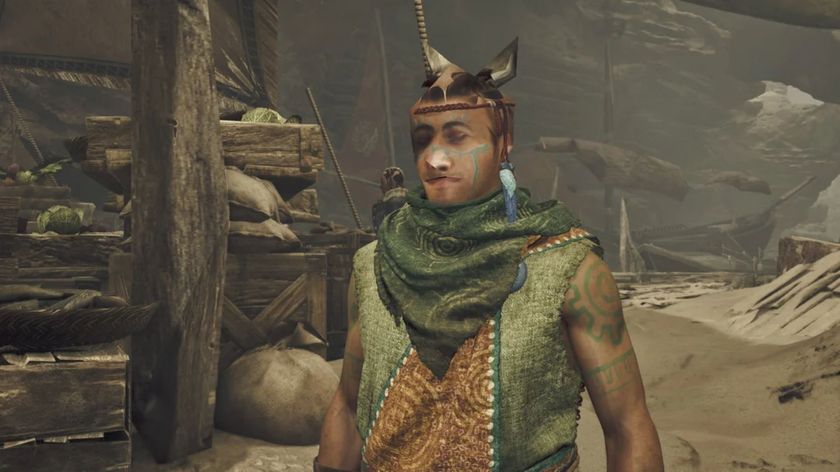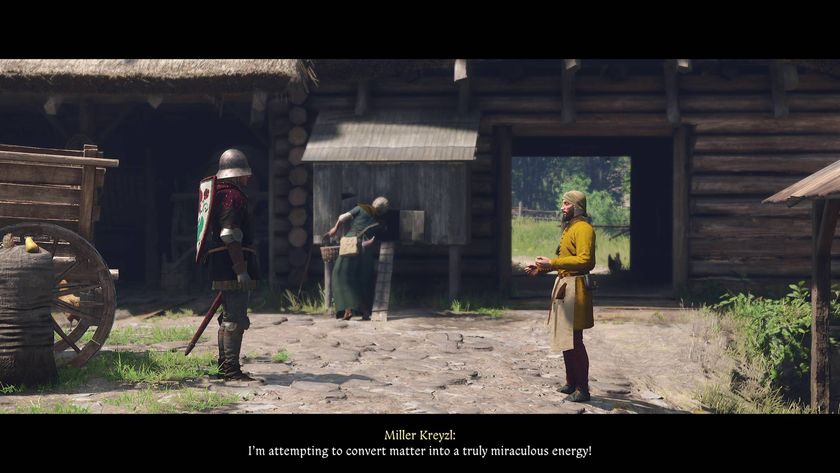50 3D milestones in gaming
A look at gaming's trailblazers of 3D technology
All this week our friends at 3D World have been looking at the landmark 3D titles in gaming, starting in the arcades and charting the most cutting-edge advances in 3D technology all the way to the games that we play on home consoles today.
Night Driver (Atari, 1976)
Generally held to be the very first 3D video game, Atari’s Night Driver managed to conjure a 3D experience out of very little computing horsepower by stripping away all non-essentials. The car was a plastic overlay stuck to the screen and the night setting did away with the need for anything other than the illusion of a fast-moving 3D road, made solely out of strategically placed side markers. An elegant solution that still looks quite reasonable today, in a minimalist kind of way.
Battlezone (Atari, 1980)
More from Atari in the form of its seminal tank battling title. Again taking the minimalist approach, Battlezone used monochrome vectors to create a stripped-down 3D environment populated with basic geometric solids and, more importantly, vectorised tanks and other opponents that need blasting before they blast you. As with many of Atari’s vector titles its basic but sharp graphics set it apart from its raster-based arcade counterparts and it remained a favourite for many years, as well as being adapted into a tank gunner training version for the US Army. Original versions of Battlezone had the player viewing the action through a periscope attachment; because of this it’s often cited as being the first virtual reality game.
Turbo (Sega, 1981)
1981 saw the arrival of colour raster 3D arcade games, creating a pseudo-3D look through the judicious use of cleverly scaled sprite graphics, in the form of a pair of racing games. Namco’s Pole Position was arguably the most successful with its workmanlike recreation of the Fuji Speedway and big, detailed cars, spawning a sequel and even a cartoon series. But Sega’s Turbo came first and achieved impressive results out of not very much, with an assortment of driving environments complete with scenery whizzing past and a busy road littered with other vehicles to overtake. Its sprite scenery often scaled strangely and the high-up view didn’t catch on, but by being less of a slave to realism it proved a lot more fun than Pole Position.
Sign up to the 12DOVE Newsletter
Weekly digests, tales from the communities you love, and more
Zaxxon (Sega, 1982)
Isometric 3D proved to be a popular technique in the 1980s. It enabled developers to create amazingly rich-looking pseudo-3D environments without the computational demands that other 3D techniques required. It proved especially popular on home computer formats, but Sega’s Zaxxon pioneered the technique in the arcades, taking the gameplay of titles like Scramble and forcing it into an isometric view as you piloted a fighter ship through a detailed and colourful space fortress. Its looks made it an instant success, but it Zaxxon lacked variety and its appeal turned out to be fairly short-lived.
Star Wars (Atari, 1983)
Before George Lucas felt the need to go back and slather CG all over Star Wars, Atari came up with its own CG recreation of the film’s climactic Battle of Yavin sequence. Once again Atari opted for a vector display, this time using its Color-QuadraScan technology previously seen in Tempest and Space Duel, resulting in a colourful, fast and action-packed game that put the player into the cockpit of Luke Skywalker’s X-Wing to battle TIE Fighters in space, fly low over the surface of the Death Star and then belt down the trench to deliver fiery death into the exhaust port. Truly immersive and rightly regarded as a classic, original Star Wars machines are much sought after by collectors.
Continue reading the rest of '50 3D milestones in gaming' on 3D World.
Most Popular






